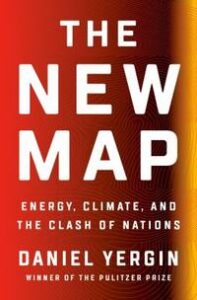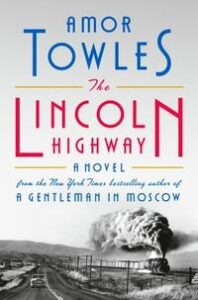 The bestselling author of A Gentleman in Moscow and Rules of Civility and master of absorbing, sophisticated fiction returns with a stylish and propulsive novel set in 1950s America In June, 1954, eighteen-year-old Emmett Watson is driven home to Nebraska by the warden of the juvenile work farm where he has just served fifteen months for involuntary manslaughter. His mother long gone, his father recently deceased, and the family farm foreclosed upon by the bank, Emmett’s intention is to pick up his eight-year-old brother, Billy, and head to California where they can start their lives anew. But when the warden drives away, Emmett discovers that two friends from the work farm have hidden themselves in the trunk of the warden’s car. Together, they have hatched an altogether different plan for Emmett’s future, one that will take them all on a fateful journey in the opposite direction-to the City of New York. Spanning just ten days and told from multiple points of view, Towles’s third novel will satisfy fansof his multi-layered literary styling while providing them an array of new and richly imagined settings, characters, and themes
The bestselling author of A Gentleman in Moscow and Rules of Civility and master of absorbing, sophisticated fiction returns with a stylish and propulsive novel set in 1950s America In June, 1954, eighteen-year-old Emmett Watson is driven home to Nebraska by the warden of the juvenile work farm where he has just served fifteen months for involuntary manslaughter. His mother long gone, his father recently deceased, and the family farm foreclosed upon by the bank, Emmett’s intention is to pick up his eight-year-old brother, Billy, and head to California where they can start their lives anew. But when the warden drives away, Emmett discovers that two friends from the work farm have hidden themselves in the trunk of the warden’s car. Together, they have hatched an altogether different plan for Emmett’s future, one that will take them all on a fateful journey in the opposite direction-to the City of New York. Spanning just ten days and told from multiple points of view, Towles’s third novel will satisfy fansof his multi-layered literary styling while providing them an array of new and richly imagined settings, characters, and themes
Category: Books (Page 3 of 9)
 From the acclaimed author of High Dive comes an enveloping, exultant novel of New York City at the turn of the twentieth century, a story of one man’s rise to fame and fortune, and his murder in a case of mistaken identity. On Friday the 13th of November, 1903, a famous man was killed on Park Avenue in broad daylight by a stranger. It was neither a political act nor a crime of passion. It was a mistake. The victim was Andrew Haswell Green, the “Father of Greater New York,” who shaped the city as we know it. Without him there would be no Central Park, no Metropolitan Museum of Art, no Museum of Natural History, no New York Public Library. His influence was everywhere, yet he died alone, misunderstood, feeling that his whole life might have been, after all, a great mistake. A work of tremendous depth and piercing emotion, The Great Mistake is a portrait of a self-made man–farm boy to urban visionary; the reimagining of a murder investigation that shook the city; and the moving story of a singular individual who found the world closed off to him, and, in spite of all odds, enlarged it.
From the acclaimed author of High Dive comes an enveloping, exultant novel of New York City at the turn of the twentieth century, a story of one man’s rise to fame and fortune, and his murder in a case of mistaken identity. On Friday the 13th of November, 1903, a famous man was killed on Park Avenue in broad daylight by a stranger. It was neither a political act nor a crime of passion. It was a mistake. The victim was Andrew Haswell Green, the “Father of Greater New York,” who shaped the city as we know it. Without him there would be no Central Park, no Metropolitan Museum of Art, no Museum of Natural History, no New York Public Library. His influence was everywhere, yet he died alone, misunderstood, feeling that his whole life might have been, after all, a great mistake. A work of tremendous depth and piercing emotion, The Great Mistake is a portrait of a self-made man–farm boy to urban visionary; the reimagining of a murder investigation that shook the city; and the moving story of a singular individual who found the world closed off to him, and, in spite of all odds, enlarged it.
 A grand, devastating portrait of three generations of the Sackler family, famed for their philanthropy, whose fortune was built by Valium and whose reputation was destroyed by OxyContin, by the prize-winning, bestselling author of Say Nothing The Sackler name adorns the walls of many storied institutions–Harvard, the Metropolitan Museum of Art, Oxford, the Louvre. They are one of the richest families in the world, known for their lavish donations to the arts and the sciences. The source of the family fortune was vague, however, until it emerged that the Sacklers were responsible for making and marketing a blockbuster painkiller that was the catalyst for the opioid crisis.
A grand, devastating portrait of three generations of the Sackler family, famed for their philanthropy, whose fortune was built by Valium and whose reputation was destroyed by OxyContin, by the prize-winning, bestselling author of Say Nothing The Sackler name adorns the walls of many storied institutions–Harvard, the Metropolitan Museum of Art, Oxford, the Louvre. They are one of the richest families in the world, known for their lavish donations to the arts and the sciences. The source of the family fortune was vague, however, until it emerged that the Sacklers were responsible for making and marketing a blockbuster painkiller that was the catalyst for the opioid crisis.
Empire of Pain begins with the story of three doctor brothers, Raymond, Mortimer and the incalculably energetic Arthur, who weathered the poverty of the Great Depression and appalling anti-Semitism. Working at a barbaric mental institution, Arthur saw a better way and conducted groundbreaking research into drug treatments. He also had a genius for marketing, especially for pharmaceuticals, and bought a small ad firm. Arthur devised the marketing for Valium, and built the first great Sackler fortune. He purchased a drug manufacturer, Purdue Frederick, which would be run by Raymond and Mortimer. The brothers began collecting art, and wives, and grand residences in exotic locales. Their children and grandchildren grew up in luxury. Forty years later, Raymond’s son Richard ran the family-owned Purdue.
The template Arthur Sackler created to sell Valium–co-opting doctors, influencing the FDA, downplaying the drug’s addictiveness–was employed to launch a far more potent product: OxyContin. The drug went on to generate some thirty-five billion dollars in revenue, and to launch a public health crisis in which hundreds of thousands would die. This is the saga of three generations of a single family and the mark they would leave on the world, a tale that moves from the bustling streets of early twentieth-century Brooklyn to the seaside palaces of Greenwich, Connecticut, and Cap d’Antibes to the corridors of power in Washington, D.C.
Empire of Pain chronicles the multiple investigations of the Sacklers and their company, and the scorched-earth legal tactics that the family has used to evade accountability. The history of the Sackler dynasty is rife with drama–baroque personal lives; bitter disputes over estates; fistfights in boardrooms; glittering art collections; Machiavellian courtroom maneuvers; and the calculated use of money to burnish reputations and crush the less powerful. Empire of Pain is a masterpiece of narrative reporting and writing, exhaustively documented and ferociously compelling. It is a portrait of the excesses of America’s second Gilded Age, a study of impunity among the super elite and a relentless investigation of the naked greed and indifference to human suffering that built one of the world’s great fortunes.
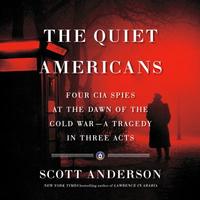 A probing history of the CIA’s evolving role from the outset of the Cold War into the 1960s, viewed through the exploits of four American spies. On the heels of Germany’s defeat in World War II, European leaders and intelligence agents were shifting focus to the Soviet Union’s dominance over Eastern Europe and threatening pursuit of influence in Asia. Under a recently sworn-in President Harry Truman, the American government was slower to gauge early. signals but eventually responded with often disastrous covert tactics. Anderson delivers a complex, massively scaled narrative, balancing prodigious research with riveting storytelling skills. He tracks the careers of four agents. In the Philippines, Edward Lansdale was instrumental in combatting the Hukbalahap uprising, lining up Ramon Magsaysay, the secretary of defense, to become president in 1954. Peter Sichel, a German Jew whose family escaped the Nazis, ran the CIA’s Berlin office for more than a decade. Former naval officer Michael Burke headed the paramilitary operations in Albania and elsewhere. Frank Wisner, the CIA’s deputy director of plans, had key roles in the Office of Policy Coordination until its full merging with the CIA in 1950. Though all four men began their careers with the strong desire to defend American freedom, the author
A probing history of the CIA’s evolving role from the outset of the Cold War into the 1960s, viewed through the exploits of four American spies. On the heels of Germany’s defeat in World War II, European leaders and intelligence agents were shifting focus to the Soviet Union’s dominance over Eastern Europe and threatening pursuit of influence in Asia. Under a recently sworn-in President Harry Truman, the American government was slower to gauge early. signals but eventually responded with often disastrous covert tactics. Anderson delivers a complex, massively scaled narrative, balancing prodigious research with riveting storytelling skills. He tracks the careers of four agents. In the Philippines, Edward Lansdale was instrumental in combatting the Hukbalahap uprising, lining up Ramon Magsaysay, the secretary of defense, to become president in 1954. Peter Sichel, a German Jew whose family escaped the Nazis, ran the CIA’s Berlin office for more than a decade. Former naval officer Michael Burke headed the paramilitary operations in Albania and elsewhere. Frank Wisner, the CIA’s deputy director of plans, had key roles in the Office of Policy Coordination until its full merging with the CIA in 1950. Though all four men began their careers with the strong desire to defend American freedom, the author
engagingly demonstrates how their efforts were undermined by politically motivated power grabs within the
U.S. government; poorly planned covert operations; and duplicitous scheming by the likes of J. Edgar Hoover
and Sen. Joseph McCarthy, who were espousing anti-communist rhetoric to advance their own careers. “By
the end of Eisenhower’s second term,” writes Anderson, “the geographical spread of governments that his
administration had undertaken to overthrow or otherwise subvert suggested an almost purposeful design, as if
it sought to alienate the citizenry of most every region and subregion of the globe.” Over the course of the
narrative, the author amply shows how the CIA was increasingly pushed to function as an instrument of
politically charged ambitions.
An engrossing history of the early days of the CIA.
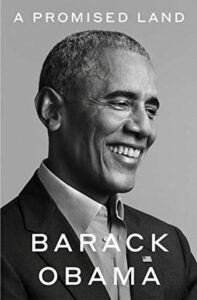 A PROMISED LAND
A PROMISED LAND
BY BARACK OBAMA ‧ RELEASE DATE: NOV. 17, 2020
In the first volume of his presidential memoir, Obama recounts the hard path to the White House.
In this long, often surprisingly candid narrative, Obama depicts a callow youth spent playing basketball and “getting loaded,” his early reading of difficult authors serving as a way to impress coed classmates. (“As a strategy for picking up girls, my pseudo-intellectualism proved mostly worthless,” he admits.) Yet seriousness did come to him in time and, with it, the conviction that America could live up to its stated aspirations. His early political role as an Illinois state senator, itself an unlikely victory, was not big enough to contain Obama’s early ambition, nor was his term as U.S. Senator. Only the presidency would do, a path he painstakingly carved out, vote by vote and speech by careful speech. As he writes, “By nature I’m a deliberate speaker, which, by the standards of presidential candidates, helped keep my gaffe quotient relatively low.” The author speaks freely about the many obstacles of the race—not just the question of race and racism itself, but also the rise, with “potent disruptor” Sarah Palin, of a know-nothingism that would manifest itself in an obdurate, ideologically driven Republican legislature. Not to mention the meddlings of Donald Trump, who turns up in this volume for his idiotic “birther” campaign while simultaneously fishing for a contract to build “a beautiful ballroom” on the White House lawn. A born moderate, Obama allows that he might not have been ideological enough in the face of Mitch McConnell, whose primary concern was then “clawing [his] way back to power.” Indeed, one of the most compelling aspects of the book, as smoothly written as his previous books, is Obama’s cleareyed scene-setting for how the political landscape would become so fractured—surely a topic he’ll expand on in the next volume.
A top-notch political memoir and serious exercise in practical politics for every reader.
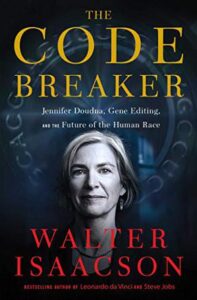 THE CODE BREAKER
THE CODE BREAKER
JENNIFER DOUDNA, GENE EDITING, AND THE FUTURE OF THE HUMAN RACE
BY WALTER ISAACSON ‧
A magisterial biography of the co-discoverer of what has been called the greatest advance in biology since the discovery of DNA.
For the first third of Isaacson’s latest winner, the author focuses on the life and career of Jennifer Doudna (b. 1964). Raised by academic parents who encouraged her fascination with science, she flourished in college and went on to earn a doctorate in biological chemistry and molecular pharmacology from Harvard. After fellowships and postdoc programs at the University of Colorado and Yale, she joined the faculty at the University of California in 2002. In 2006, she learned about CRISPR, a system of identical repeated DNA sequences in bacteria copied from certain viruses. Others had discovered that this was a defense mechanism—CRISPR DNA generates enzymes that chop up the DNA of the infecting virus. With collaborators, she discovered how CRISPR operates and invented a much simpler technique for cutting DNA and editing genes. Although known since the 1970s, “genetic engineering” was a complex, tedious process. CRISPR made it much simpler. Formally accepted by the editors of Science in 2012, the co-authored paper galvanized the scientific establishment and led to a torrent of awards, culminating in the 2020 Nobel Prize in chemistry. At this point, Isaacson steps back, keeping Doudna as the central character but describing the rush to apply gene editing to altering life and curing diseases, the intense debate over its morality, and the often shameful quarrels over credit and patents. A diligent historian and researcher, Isaacson lucidly explains CRISPR and refuses to pass it off as a far-fetched magic show. Some scientific concepts (nuclear fission, evolution) are easy to grasp but not CRISPR. Using charts, analogies, and repeated warnings for readers to pay attention, the author describes a massively complicated operation in which humans can program heredity. Those familiar with college-level biology will have a better time, but nobody will regret the reading experience.
A vital book about the next big thing in science—and yet another top-notch biography from Isaacson.
Relevant story about using mRNA to make the Pfizer and Moderna vaccines:
https://www.nytimes.com/2021/04/08/health/coronavirus-mrna-kariko.html?searchResultPosition=1
Side read courtesy of Bert. https://interestingengineering.com/crispr-breakthrough-scientists-can-now-turn-genes-on-and-off-at-whim
Tom Igoe’s notes: Notes on Code Breaker by Walter Isaacson from Tom Igoe
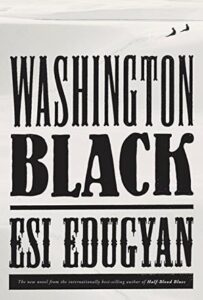 WASHINGTON BLACK
WASHINGTON BLACK
It’s 1830 on the island of Barbados, and a 12-year-old slave named George Washington Black wakes up every hot morning to cruelties administered to him and other black men, women, and children toiling on a sugar plantation owned by the coldblooded Erasmus Wilde. Christopher, one of Erasmus’ brothers, is a flamboyant oddball with insatiable curiosity toward scientific matters and enlightened views on social progress. Upon first encountering young Wash, Christopher, also known as Titch, insists on acquiring him from his brother as his personal valet and research assistant. Neither Erasmus nor Wash is pleased by this transaction, and one of the Wildes’ cousins, the dour, mysterious Philip, is baffled by it. But then Philip kills himself in Wash’s presence, and Christopher, knowing the boy will be unjustly blamed and executed for the death, activates his hot air balloon, the Cloud-cutter, to carry both himself and Wash northward into a turbulent storm. So begins one of the most unconventional escapes from slavery ever chronicled as Wash and Titch lose their balloon but are carried the rest of the way to America by a ship co-captained by German-born twins of wildly differing temperaments. Once in Norfolk, Virginia, they meet with a sexton with a scientific interest in dead tissue and a moral interest in ferrying other runaway slaves through the Underground Railroad. Rather than join them on their journey, Wash continues to travel with Titch for a reunion with the Wildes’ father, an Arctic explorer, north of Canada. Their odyssey takes even more unexpected turns, and soon Wash finds himself alone and adrift in the unfamiliar world as “a disfigured black boy with a scientific turn of mind…running, always running from the dimmest of shadows.” Canadian novelist Edugyan (Half-Blood Blues, 2012, etc.) displays as much ingenuity and resourcefulness as her main characters in spinning this yarn, and the reader’s expectations are upended almost as often as her hero’s.
 UNSINKABLE
UNSINKABLE
FIVE MEN AND THE INDOMITABLE RUN OF THE USS PLUNKETT
The captivating story of a World War II destroyer that saw plenty of action.
While conducting research on the Plunkett, which was “all over the place, intersecting with the greatest events and personages of the war,” Sullivan discovered that several crew members were still alive, so he interviewed nonagenarian veterans, as well as their children and grandchildren, in addition to his diligent combing of archives, journals, and ship’s logs. The result is a vivid portrait of the sailors, wives, girlfriends, and families and their world, in which the Plunkett’s battles often seem like interludes. As is typical in war, tedium was the norm, excitement came at rare intervals, and one horrendous incident ensured the ship’s place in history. Launched in 1940, the Plunkett was one of 514 destroyers that fought WWII; 71 were lost, the most of any ship. Even before war broke out, the Plunkett escorted convoys to Britain across the North Atlantic. In November 1942, it accompanied a massive fleet and army that crossed to North Africa during Operation Torch. In July 1943, the Allies invaded Sicily, and the Luftwaffe sank many Allied ships—but not the Plunkett, which also narrowly escaped damage during the invasion of the Italian mainland at Salerno. Matters changed on Jan. 24, 1944 in the sea off Anzio, where a swarm of attackers seemed to target the Plunkett. Countless bombs missed, but one struck, causing terrible damage and killing 53 men. Sullivan delivers a gripping account of what followed as the men fought the fires, rescued survivors, retrieved bodies and body parts, and limped into harbor. After three months of repairs in the U.S., the ship returned to Europe to serve again. Sullivan has done his homework, and readers will enjoy his generous digressions into biography, courtship, shore-leave horseplay, shipboard politics, and a postwar summary.
An outstanding addition to the still-active genre of WWII histories focusing on a single unit, ship, or bomber.
 The New York Times bestselling author of The Spy and the Traitor tells the thrilling true story of the most important female spy in history: an agent code-named “Sonya,” who set the stage for the Cold War. In 1942, in a quiet village in the leafy English Cotswolds, a thin, elegant woman lived in a small cottage with her three children and her husband, who worked as a machinist nearby. Ursula Burton was friendly but reserved, and spoke English with a slight foreign accent. By all accounts, she seemed to be living a simple, unassuming life. Her neighbors in the village knew little about her. They didn’t know that she was a high-ranking Soviet intelligence officer. They didn’t know that her husband was also a spy, or that she was running powerful agents across Europe. Behind the facade of her picturesque life, Burton was a dedicated Communist, a Soviet colonel, and a veteran agent, gathering the scientific secrets that would enable the Soviet Union to build the bomb. This true-life spy story is a masterpiece about the woman code-named “Sonya.” Over the course of her career, she was hunted by the Chinese, the Japanese, the Nazis, MI5, MI6, and the FBI-and she evaded them all. Her story reflects the great ideological clash of the twentieth century-between Communism, Fascism, and Western democracy-and casts new light on the spy battles and shifting allegiances of our own times. With unparalleled access to Sonya’s diaries and correspondence and never-before-seen information on her clandestine activities, Ben Macintyre has conjured a page-turning history of a legendary secret agent, a woman who influenced the course of the Cold War and helped plunge the world into a decades-long standoff between nuclear superpowers
The New York Times bestselling author of The Spy and the Traitor tells the thrilling true story of the most important female spy in history: an agent code-named “Sonya,” who set the stage for the Cold War. In 1942, in a quiet village in the leafy English Cotswolds, a thin, elegant woman lived in a small cottage with her three children and her husband, who worked as a machinist nearby. Ursula Burton was friendly but reserved, and spoke English with a slight foreign accent. By all accounts, she seemed to be living a simple, unassuming life. Her neighbors in the village knew little about her. They didn’t know that she was a high-ranking Soviet intelligence officer. They didn’t know that her husband was also a spy, or that she was running powerful agents across Europe. Behind the facade of her picturesque life, Burton was a dedicated Communist, a Soviet colonel, and a veteran agent, gathering the scientific secrets that would enable the Soviet Union to build the bomb. This true-life spy story is a masterpiece about the woman code-named “Sonya.” Over the course of her career, she was hunted by the Chinese, the Japanese, the Nazis, MI5, MI6, and the FBI-and she evaded them all. Her story reflects the great ideological clash of the twentieth century-between Communism, Fascism, and Western democracy-and casts new light on the spy battles and shifting allegiances of our own times. With unparalleled access to Sonya’s diaries and correspondence and never-before-seen information on her clandestine activities, Ben Macintyre has conjured a page-turning history of a legendary secret agent, a woman who influenced the course of the Cold War and helped plunge the world into a decades-long standoff between nuclear superpowers
ENERGY, CLIMATE, AND THE CLASH OF NATIONS
The latest on global energy geopolitics from the pen of an expert.
Yergin is the Pulitzer Prize–winning author of multiple magisterial volumes on world affairs as they relate to energy. In The Quest (2011), he described the stormy rivalry between an America struggling to maintain its hegemony in the face of upcoming rivals Russia and China. The following decade has not improved matters, and the current global pandemic is proving to be a disaster. However, bad news often makes for entertaining reading, and Yergin delivers a fascinating and meticulously researched page-turner. He maintains that an energy revolution has transformed the world to America’s benefit. However, it’s not wind and solar but fracking. American oil production had been dropping since 1970, but after 2000, fracking changed the game. In 2018, the U.S. overtook Russia and Saudi Arabia to again become the world’s largest oil producer. Production tripled between 2008 and 2020. Yergin astutely examines how other nations responded. Russia, with an economy “only slightly larger than Spain’s,” depends on oil income as much as the old Soviet Union. Responding to American oil sanctions, Putin has vastly improved relations with China, by many measures the world’s leading economy. “China,” writes the author, “has become what Britain had been during the industrial revolution—the manufacturing ‘workshop of the world.’ ” It’s already the largest producer of steel, aluminum, and computers as well as the largest energy consumer. Turning to the Middle East, Yergin describes an unhappy collection of failed states, civil wars, oppressive theocracies, bloody insurgencies, and wealthy ministates, all dealing with plummeting oil prices. The author views Trump with the same mild disapproval he applies to Putin and China’s Xi Jinping, and he chastises environmentalists for getting certain facts wrong. Yergin accepts that humans have dramatically affected the climate, but he doubts the practicality of proposed solutions.
Required reading. Another winner from a master.
A LONG PETAL OF THE SEA
BY ISABEL ALLENDE ; TRANSLATED BY NICK CAISTOR & AMANDA HOPKINSON
 Two refugees from the Spanish Civil War cross the Atlantic Ocean to Chile and a half-century of political and personal upheavals.
Two refugees from the Spanish Civil War cross the Atlantic Ocean to Chile and a half-century of political and personal upheavals.
We meet Victor Dalmau and Roser Bruguera in 1938 as it is becoming increasingly clear that the Republican cause they support is doomed. When they reunite in France as penniless refugees, Roser has survived a harrowing flight across the Pyrenees while heavily pregnant and given birth to the son of Victor’s brother Guillem, killed at the Battle of the Ebro. Victor, evacuated with the wounded he was tending in a makeshift hospital, learns of a ship outfitted by poet Pablo Neruda to take exiles to a new life in Chile, but he and Roser must marry in order to gain a berth. Allende (In the Midst of Winter, 2017, etc.) expertly sets up this forced intimacy between two very different people: Resolute, realistic Roser never looks back and doggedly pursues a musical career in Chile while Victor, despite being fast-tracked into medical school by socialist politician Salvador Allende (a relative of the author’s), remains melancholy and nostalgic for his homeland. Their platonic affection deepens into physical love and lasting commitment in an episodic narrative that reaches a catastrophic climax with the 1973 coup overthrowing Chile’s democratically elected government. For Victor and Roser, this is a painful reminder of their losses in Spain and the start of new suffering. The wealthy, conservative del Solar family provides a counterpoint to the idealistic Dalmaus; snobbish, right-wing patriarch Isidro and his hysterically religious wife, Laura, verge on caricature, but Allende paints more nuanced portraits of eldest son Felipe, who smooths the refugees’ early days in Chile, and daughter Ofelia, whose brief affair with Victor has lasting consequences. Allende tends to describe emotions and events rather than delve into them, and she paints the historical backdrop in very broad strokes, but she is an engaging storyteller. A touching close in 1994 brings one more surprise and unexpected hope for the future to 80-year-old Victor.
A trifle facile, but this decades-spanning drama is readable and engrossing throughout.
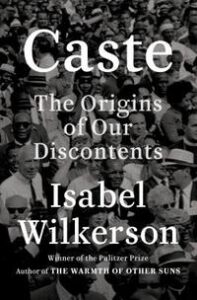 As we go about our daily lives, caste is the wordless usher in a darkened theater, flashlight cast down in the aisles, guiding us to our assigned seats for a performance. The hierarchy of caste is not about feelings or morality. It is about power–which groups have it and which do not.” In this brilliant book, Isabel Wilkerson gives us a masterful portrait of an unseen phenomenon in America as she explores, through an immersive, deeply researched narrative and stories about real people, how America today and throughout its history has been shaped by a hidden caste system, a rigid hierarchy of human rankings. Beyond race, class, or other factors, there is a powerful caste system that influences people’s lives and behavior and the nation’s fate. Linking the caste systems of America, India, and Nazi Germany, Wilkerson explores eight pillars that underlie caste systems across civilizations, including divine will, bloodlines, stigma, and more. Using riveting stories about people–including Martin Luther King, Jr., baseball’s Satchel Paige, a single father and his toddler son, Wilkerson herself, and many others–she shows the ways that the insidious undertow of caste is experienced every day. She documents how the Nazis studied the racial systems in America to plan their out-cast of the Jews; she discusses why the cruel logic of caste requires that there be a bottom rung for those in the middle to measure themselves against; she writes about the surprising health costs of caste, in depression and life expectancy, and the effects of this hierarchy on our culture and politics. Finally, she points forward to ways America can move beyond the artificial and destructive separations of human divisions, toward hope in our common humanity. Beautifully written, original, and revealing, Caste: The Origins of Our Discontents is an eye-opening story of people and history, and a reexamination of what lies under the surface of ordinary lives and of America life today
As we go about our daily lives, caste is the wordless usher in a darkened theater, flashlight cast down in the aisles, guiding us to our assigned seats for a performance. The hierarchy of caste is not about feelings or morality. It is about power–which groups have it and which do not.” In this brilliant book, Isabel Wilkerson gives us a masterful portrait of an unseen phenomenon in America as she explores, through an immersive, deeply researched narrative and stories about real people, how America today and throughout its history has been shaped by a hidden caste system, a rigid hierarchy of human rankings. Beyond race, class, or other factors, there is a powerful caste system that influences people’s lives and behavior and the nation’s fate. Linking the caste systems of America, India, and Nazi Germany, Wilkerson explores eight pillars that underlie caste systems across civilizations, including divine will, bloodlines, stigma, and more. Using riveting stories about people–including Martin Luther King, Jr., baseball’s Satchel Paige, a single father and his toddler son, Wilkerson herself, and many others–she shows the ways that the insidious undertow of caste is experienced every day. She documents how the Nazis studied the racial systems in America to plan their out-cast of the Jews; she discusses why the cruel logic of caste requires that there be a bottom rung for those in the middle to measure themselves against; she writes about the surprising health costs of caste, in depression and life expectancy, and the effects of this hierarchy on our culture and politics. Finally, she points forward to ways America can move beyond the artificial and destructive separations of human divisions, toward hope in our common humanity. Beautifully written, original, and revealing, Caste: The Origins of Our Discontents is an eye-opening story of people and history, and a reexamination of what lies under the surface of ordinary lives and of America life today

